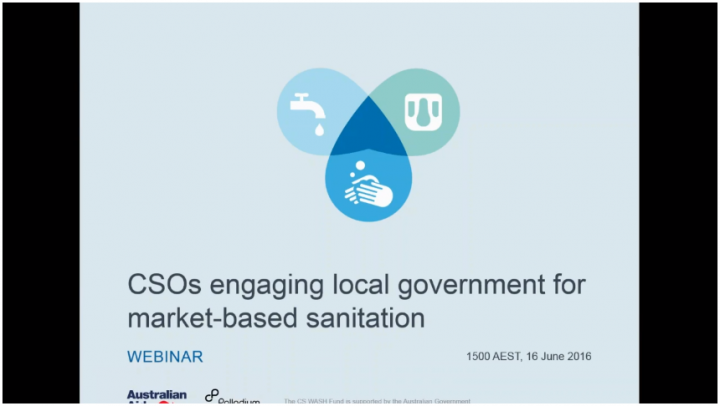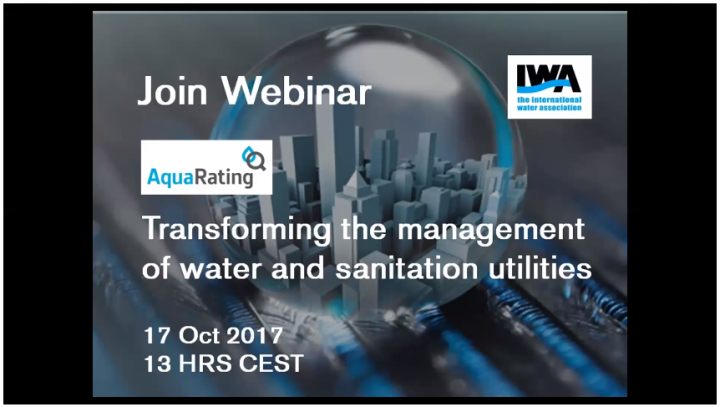Ministry of Rural Rehabilitation & Development (2012) Implementation Manual For Implementing Community Led Total Sanitation (CLTS) in the Community (For the use of CLTS Master Trainers and Facilitators)
CLTS is a new approach in Afghanistan; and all stakeholders should become familiar with how it is implemented. CLTS component has been successfully implemented in various developing nations throughout the world; however, there was an urgent need how to adapt this approach to fit the societal and cultural aspects of in Afghanistan. MRRD is pleased to have this opportunity to develop this manual for CLTS […]
Wolter, D. (2018) Communal Wastewater Characteristics in Developing Countries Desk Study to inform Sanitation System Design
Wastewater characteristics for developing countries are usually either very generalising, outdated or only applicable in a limited context under specific circumstances. The goal of this assignment is to review and collate accessible data on DEWATS design parameters in developing countries and where possible to classify it depending on country and income group in order to • identify knowledge gaps which will guide future BORDA R&D efforts • form […]
Keith, B. (2016) Girls’ and women’s right to menstrual health: Evidence and opportunities Outlook on reproductive health
This issue of Outlook establishes menstrual health as a sexual and reproductive health and rights issue; presents the obstacles to and the consequences of not promoting and protecting menstrual health; and highlights opportunities to improve menstrual health in low-resource settings.
WSP Tanzania (2010) Training of Trainers Manual on: Sanitation Marketing Community-led Total Sanitation Handwashing with Soap
Key Messages: • Inadequate sanitation and hygiene adversely impacts human well-being. • In Tanzania basic latrine coverage is high but this still constitutes inadequate sanitation • Some families continue to defecate in the open • Handwashing with soap is not practiced consistently or at the key junctures. • WSP is implementing a project to scale up access to improved sanitation and hygiene in Tanzania
Kidd, R. (2014) Facilitator’s Manual for Small Towns CLTS Field Work
The Facilitator’s Manual for Small Towns CLTS Field Work is a guide for field workers who are promoting sanitation improvements at community and household levels, using the CLTS approach applied to the small towns context.
WSP (2007) Module 1: Guidance Notes Training of Trainers’ Manual on Community-driven Total Sanitation
Who is this Manual for? Resource agencies engaged in training potential master trainers to facilitate and scale up community-driven total sanitation. AusAID provides WSP-SA programmatic support.
MoHS Sierra Leone, UNICEF, GOAL (2010) CLTs Training Manual for Natural Leaders
This manual has been designed by the Ministry of Health and Sanitation (MoHS), UNICEF and GOAL to help support Natural Leaders during the pre-triggering, triggering and follow-up of CLTS communities. The following pages will give simple examples of how to carry out each stage of CLTS. The booklet is not meant to be a script to read out whilst triggering however. A good natural leader […]
Enayetullah, I. (2015) Co-composting of Municipal Solid Waste and Faecal Sludge in Kushtia, Bangladesh
1. Background of Kushtia Municipality 2. Solid Waste Management in Bangladesh 3. Sanitation Situation in Bangladesh 4. Faecal Sludge Management Situation in Bangladesh 5. Problem of Solid and Faecal Sludge Waste Management 6. Pilot Intervention on Faecal Sludge Management in Kushtia 7. Key Findings
Living Web Farms (2015) Black Soldier Fly Production Part 1 Introduction: Online Course
Transform food waste into a valuable food supply for chickens, hogs, songbirds and fish with Black Soldier Fly Production. Karl Warkomski, Director of Conservation with ProtaCulture, LLC introduces us to this astounding insect that can break down food waste faster than microbes. Black Soldier Fly maggots make a high fat, high protein source of nourishment while making what is normally waste into a valuable farm/garden […]
Centre for Energy Studies Institute of Engineering (2001) Advance Course in Biogas Technology
SNV/BSP had organized a biogas training course from 17 to 20 May 2000 for the trainers of Junior Biogas Technicians (JBT) of the Institute of Engineering (IOE), Pokhara with the participation of 16 trainees having engineering background (Engineers and Overseers). The training was rated very useful. Subsequently, with support from SNV/BSP, Centre of Energy Studies (CES) of the Institute of Engineering (IOE), Tribhuwan University felt […]
GIZ (2018) Webinar on the WASHaLOT 3.0 Webinar on the prefabricated (group-) handwashing facility WASHaLOT 3.0
The WASHaLOT 3.0 is a prefabricated handwashing facility that accommodate washing activities of 20 persons at a time. It is currently being used in public schools in the Philippines to address the need for schools to facilitate handwashing prior to eating and thereby establish daily hygiene practice in schools. The facility has the potential to be used in other contexts such as day care centers, […]
GIZ (2018) WASHaLOT 3.0 Webinar Presentation Presentation of Development and Technical Applicability Framework of the group-handwashing facility WASHaLOT
The WASHaLOT 3.0 is a prefabricated handwashing facility that accommodate washing activities of 20 persons at a time. It is currently being used in public schools in the Philippines to address the need for schools to facilitate handwashing prior to eating and thereby establish daily hygiene practice in schools. The facility has the potential to be used in other contexts such as day care centers, […]
NAVTTC (2011) Curriculum for Biogas Technicians (Masons) to Construct Fixed Dome Biodigesters (Level 2)
This curriculum is developed for the competency based training of Biogas Technicians. The term competency is at the heart of the training reform agenda, the new system of vocational education and training. Competency refers to the ability to perform ‘whole’ work roles to the standard expected in employment. Job performance involves more than the performance of a well-defined set of tasks in a routine, predictable […]
Biogas Solutions Uganda Ltd., SNV Uganda (2016) Operation and Maintenance of Biogas Plants, Bio-slurry Management and Use A Practical Handbook for the Trainer of Trainers of Biogas Construction Enterprises
The handbook includes activities for mobilizing trainees, preparing and conducting training sessions and the layout of training topics. Because of the way it is written, the ToTs or others who may be less experienced in workshop presentation may see this as an opportunity to develop new skills. This particular guide addresses some aspects of trainer preparation but focuses on the content and its presentation rather […]
CS WASH (2016) Webinar: CSOs engaging local government for market-based sanitation
This webinar led by Topic Expert Associate Professor Juliet Willetts focuses on Civil Society Organisations (CSOs) and market-based sanitation approaches. It addresses the question, How can CSOs also work with local government or other local actors to facilitate market-based approaches?
Stanford Woods Institute for the Environment (2016) Webinar: Container-Based Sanitation Solutions
On March 17, 2016 Water Health and Development hosted a webinar discussing Container-Based Sanitation Solutions
AquaRating (2017) IWA Webinar: AquaRating Transforming the management of water and sanitation utilities
AquaRating is the performance assessment system for water and sanitation service providers. This rating solution focuses the challenges services providers face in a comprehensive way, evaluating their performance through indicators and management practices, establishing an international standard, and relying on information verified by an external entity. AquaRating was launched in 2015 and has currently utilities assessed in 5 continents. This webinar, with 4 speakers from different […]
VIA Water (2016) VIA Water Webconference: Treatment of Faecal Sludge
VIA Water Webconference discussing treatment of Faecal Sludge
Practical Action (2015) Faecal sludge management in Bangladesh
While rapidly-growing towns across Bangladesh don’t have proper sewerage system, the country has made a remarkable progress in terms of sanitation. Practical Action has been in the forefront of the faecal sludge management (FSM) practices in Bangladesh.
Practica Foundation (2014) Manuel de formation technique: Vidange hygienique a faible cout (in French) Technical Training Manual: Low Cost Hygienic Drain
La vidange hygiénique alternative des fosses de latrines représente une nécessité primordiale dans un contexte où l’assainissement dans les pays en voie de développement repose toujours plus sur les systèmes autonomes qui écessitent tous des opérations de vidange à un moment donné. Le terme « vidange hygiénique alternative » intègre deux concepts qui constituent de véritables défis sur les plans techniques, sociologiques et économiques. En […]




















